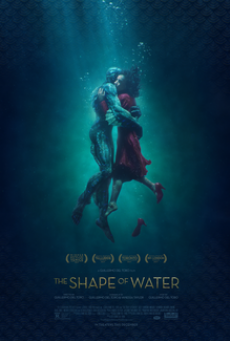
Email: reecejordan98@hotmail.co.uk
Total Article : 168
About Me:18-year-old sixth form student, studying English Literature, History and Government and Politics. My articles will broadly cover topics from the current affairs of politics to reviews of books and albums, as well as adding my own creative pieces, whether it be short fiction or general opinion.

Guillermo del Toro returns with another majestic fairy tale, inducing life and giving voice to those on the fringes.
Guillermo del Toro’s The Shape of Water has recently been in the spotlight – and for various reasons. Not only is it the Oscars season – so, by proxy most of the year’s brilliant films are released all within a month of each other, feasting on its lucrativeness – but it is also a time when the critics’ claws come out. Last year it was for La La Land, a beautiful swirling joy of a film that was tainted with cries of racism and misogyny. Success for the arts in the 21st century, it seems, cannot exist without conforming to some kind of utopia. However, The Shape of Water came under a different kind of torrent – plagiarism. Indeed, it does bare striking similarities with one of the films it is accused of copying. However, a simple rebuttal (that the conception of del Toro’s film began before the German’s airing) put that to bed. And yet still the calls of plagiarism persisted. Why?
Well, oddly enough, it seems that in 2018 there appears an unquenchable thirst for originality, which, as T.S. Eliot expertly points out, is impossible. Every film - indeed every piece of art - draws on what came before it. And The Shape of Water does this masterfully.
Elisa Esposito (Sally Hawkins) is a mute cleaner with mysterious scars on her neck. One day, Elisa and her co-worker, Zelda (Octavia Spencer), are cleaning one of the main rooms within the building when our villain (Michael Shannon) brings in a sea creature who he consistently tortures. This is the time of the Cold War between America and Russia and so this new specimen is used as a pawn within their game. Both countries want to find out its properties – how it breathes, its power, how it acts – but Elisa wants to find out how it thinks, what it likes, how it feels. Thus ensues a relationship between two creatures who cannot speak verbally but can via sign language. In a beautifully touching scene, after it is revealed that the creature’s captors wish to kill it, Elisa signs to the man whom she lives with that the creature is the only person in the world to see her without fault.
Where del Toro’s mastery as a film maker comes into play is his ability to take a pertinent source of conflict – the Cold War – and use it as a backdrop for a fairy tale fantasy. Much like his previous opus, Pan’s Labyrinth, The Shape of Water use this fairy tale mode to express, almost paradoxically, how such conflict is deeply unhuman. But he never strays too far from reality. The film’s gore – which is at times completely wince-inducing – is its grounding source. But it also shows why fantasy plays such a large role in the life of mankind. It offers us an escapism from a world that teems with conflict and brutality. In many ways The Shape of Water submerges you in its brilliance, and offers both a retreat from the world and a reminder of its evils.
Image Credits: wikipedia.co.uk

0 Comment:
Be the first one to comment on this article.